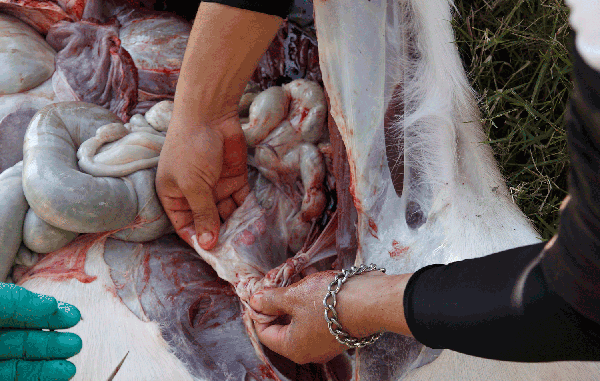
While youth hunters and their chaperones are celebrating and taking pictures of their harvest, LSU graduate student Jessie Saenz is up to his elbows in deer guts looking for oocytes — immature egg cells.
Much of Saenz’s studies have been in the development of in vitro fertilization techniques in deer species.
Saenz said his studies are beneficial in that techniques he and other team members at the LSU Department of Animal Sciences develop could ultimately help with other endangered cervidae species such as the Père David deer, which is extinct in the wild.
“What we can learn from these deer, because there are so many of them, we can apply to endangered deer species around the world,” Saenz said. “If you think about it like cats, you have your small cat and then you have your bobcat, and you have your lions and your tigers — I mean they’re all basically the same. It’s kind of the same deal with deer species.”
North America deer species include whitetails, mule deer, elk, moose and caribou. All are in the cervidae family.
According to Saenz there are about 10 to 15 endangered deer species around the world.
“If we learn techniques, if we learn types of media, times, temperatures and stuff like that, we can then — if we had the animals to work on — say one of those deer in captivity in a zoo or something passed away — we could get the ovaries and we’d kind of know how to handle them already,” he said. “So, it wouldn’t be our first time learning about the animal. We’d kind of already have a general idea.
“If we can learn from whitetails, it will help us when we need it.”